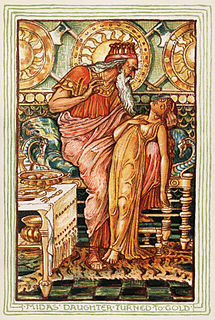
Midas is the name of one of at least three members of the royal house of Phrygia.
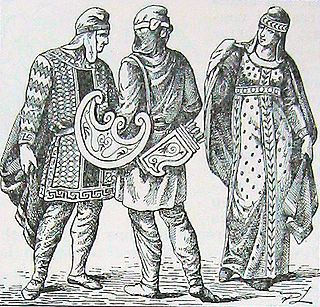
The Phrygians were an ancient Indo-European speaking people, who inhabited central-western Anatolia in antiquity. They were related to the Greeks.
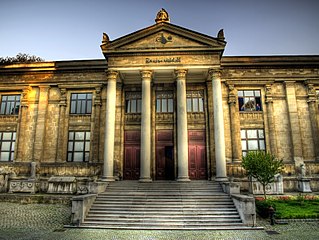
Following the proclamation of the Republic, Turkish museums developed considerably, mainly due to the importance Atatürk had attached to the research and exhibition of artifacts of Anatolia. When the Republic of Turkey was proclaimed, there were only the İstanbul Archaeology Museum called the "Asar-ı Atika Müzesi", the Istanbul Military Museum housed in the St. Irene Church, the Islamic Museum in the Suleymaniye Complex in Istanbul and the smaller museums of the Ottoman Empire Museum in a few large cities of Anatolia.

The Museum of Anatolian Civilizations is located on the south side of Ankara Castle in the Atpazarı area in Ankara, Turkey. It consists of the old Ottoman Mahmut Paşa bazaar storage building, and the Kurşunlu Han. Because of Atatürk's desire to establish a Hittite museum, the buildings were bought upon the suggestion of Hamit Zübeyir Koşay, who was then Culture Minister, to the National Education Minister, Saffet Arıkan. After the remodelling and repairs were completed (1938–1968), the building was opened to the public as the Ankara Archaeological Museum.
Keith Robert DeVries was a prominent archaeologist and expert on the Phrygian city of Gordium, in what is now Turkey. He was born in Grand Rapids, Michigan.

Andokides was an ancient Athenian vase painter, active from approximately 530 to 515 B.C. His work is unsigned and his true name unknown. He was identified as a unique artistic personality through stylistic traits found in common among several paintings. This corpus was then attributed by John D. Beazley to the Andokides Painter, a name derived from the potter Andokides, whose signature appears on several of the vases bearing the painter's work. He is often credited with being the originator of the red-figure vase painting technique. To be sure, he is certainly one of the earliest painters to work in the style. In total, fourteen amphorae and two cups are attributed to his hand. Six of the amphorae are "bilingual", meaning they display both red-figure and black-figure scenes.
Beycesultan is an archaeological site in western Anatolia, located about 5 km southwest of the modern-day city of Çivril in the Denizli Province of Turkey. It lies in a bend of an old tributary of Büyük Menderes River.
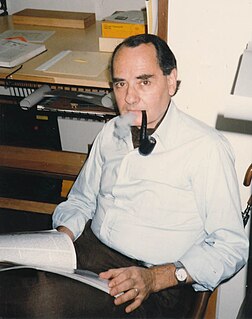
Oscar White Muscarella is an American archaeologist and former Senior Research Fellow at the Metropolitan Museum of Art, where he worked for over 40 years before retiring in 2009. He specializes in the art and archaeology of the Ancient Near East, in particular Ancient Persia and Anatolia. Muscarella is an untiring opponent of the Looting of ancient sites and has earned a reputation as the conscience of the discipline. He received his Ph.D. from the University of Pennsylvania in 1965.
Wall Painting in Turkey often reflects influences from the eastern and western styles and subject matters that date back to the Neolithic Age as the region has been a crossroads between Europe and the Middle East.

In classical antiquity, Phrygia was a kingdom in the west central part of Anatolia, in what is now Asian Turkey, centred on the Sangarios River. After its conquest, it became a region of the great empires of the time.

Gordion was the capital city of ancient Phrygia. It was located at the site of modern Yassıhüyük, about 70–80 km (43–50 mi) southwest of Ankara, in the immediate vicinity of Polatlı district. Gordion's location at the confluence of the Sakarya and Porsuk rivers gave it a strategic location with control over fertile land. Gordion lies where the ancient road between Lydia and Assyria/Babylonia crossed the Sangarius river. Occupation at the site is attested from the Early Bronze Age continuously until the 4th century CE and again in the 13th and 14th centuries CE. The Citadel Mound at Gordion is approximately 13.5 hectares in size, and at its height habitation extended beyond this in an area approximately 100 hectares in size. Gordion is the type site of Phrygian civilization, and its well-preserved destruction level of c. 800 BCE is a chronological linchpin in the region. The long tradition of tumuli at the site is an important record of elite monumentality and burial practice during the Iron Age.
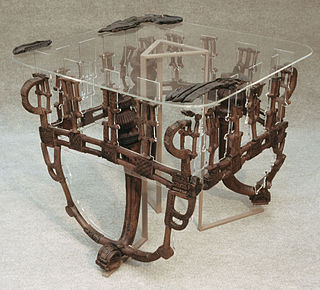
A spectacular collection of furniture and wooden artifacts was excavated by the University of Pennsylvania at the site of Gordion, the capital of the ancient kingdom of Phrygia in the early first millennium BC. The best preserved of these works came from three royal burials, surviving nearly intact due to the relatively stable conditions that had prevailed inside the tomb chambers. The Gordion wooden objects are now recognized as the most important collection of wooden finds recovered from the ancient Near East.

Yazılıkaya, Phrygian Yazılıkaya, or Midas Kenti is a village in Eskişehir Province, Turkey, located about 27 km south of Seyitgazi, 66 km south of Eskişehir, and 51 km north of Afyonkarahisar, which is known for its Phrygian archaeological remains and inscription mentioning Midas.

The Hasanlu Lovers are a pair of human remains found at the Teppe Hasanlu archaeological site, located in the Solduz Valley in the West Azerbaijan Province of Iran, in 1972 by a team from the University of Pennsylvania led by Robert H. Dyson. The skeletons have been the subject of debate since they were first excavated. They were exhibited at the Penn Museum from 1974 until the mid-1980s.

Alanya Archaeological Museum is an archaeological museum in Alanya, Turkey. The museum is divided into two sections, with displays of archaeological and ethnographic artifacts. It contains numerous ceramic, marble, bronze and glass pieces and mosaics from the Hellenistic, Roman, and Byzantine periods. Of particular note is its 2nd century bronze statue of Hercules, which measures 52 centimetres (20 in) in height. The museum, which was established in 1967, was refurbished in 2012.

Konya Archaeological Museum is a state archaeological museum in Konya, Turkey. Established in 1901, it had been relocated twice before moving to its present location in 1962. One of the most prominent displays in the museum is of sarcophagi and other antiquities from the ancient city of Çatalhöyük. Other exhibits relate to the Neolithic, Bronze Age, Iron Age, Classical, Hellenistic, Roman and the Byzantine periods; artifacts consist of ceramic ware, stone and bronze wares, ornaments and inscriptions. A prominent display is of a marble sarcophagus of the 3rd century BC with elaborate sculpting events depicting the life of Hercules. In the outer open yard of the museum, there are a number of small sculptures, sarcophagi, column heads, and epigraphy.

Acemhöyük is an archaeological site in Turkey. The tell is located near the village of Yeşilova in Merkez district, Aksaray Province. The Bronze Age name for the place was probably Purušḫanda/Purušḫattum or Ullama. The site was an Assyrian trading colony, or Karum.

Gordion Museum is a museum in Turkey.

The Pratt Ivories, also known as the AcemhöyükIvories, are a collection of furniture attachments produced in Anatolia in the early second millennium B.C. They were donated to the Metropolitan Museum of Art between 1932 and 1937 by Mr. and Mrs. George D. Pratt. The group represents one of the most important assemblages of furniture fittings from the ancient Near East. In particular, a preserved set of four sphinxes, three lion legs, a falcon, and two recumbent gazelles, comprise the earliest and most complete evidence for a luxury chair or throne from the ancient world. Many of the other pieces in the group likely belonged to a number of small decorative objects.
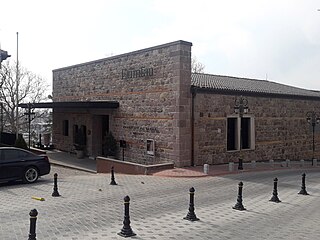
Erimtan Archaeology and Arts Museum is an archaeology museum and music venue in Ankara, Turkey.

















